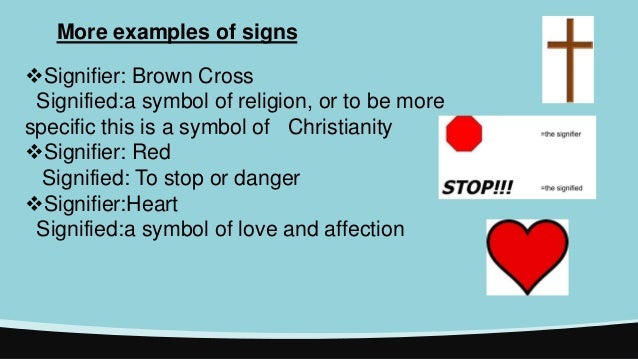
Signifier and Signified
Description
Saussure's 'theory of the sign' defined a sign as being made up of the matched pair of signifier and signified.
Signifier
The signifier is the pointing finger, the word, the sound-image.
A word is simply a jumble of letters. The pointing finger is not the star. It is in the interpretation of the signifier that meaning is created.
Signified
The signified is the concept, the meaning, the thing indicated by the signifier. It need not be a 'real object' but is some referent to which the signifier refers.
The thing signified is created in the perceiver and is internal to them. Whilst we share concepts, we do so via signifiers.
Whilst the signifier is more stable, the signified varies between people and contexts.
The signified does stabilize with habit, as the signifier cues thoughts and images.
Discussion
The signifier and signified, whilst superficially simple, form a core element of semiotics.
Saussure's ideas are contrary to Plato's notion of ideas being eternally stable. Plato saw ideas as the root concept that was implemented in individual instances. A signifier without signified has no meaning, and the signified changes with person and context. For Saussure, even the root concept is malleable.
The relationship between the signifier and the signified is arbitrary (Saussure called this 'unmotivated'). A real object need not actually exist 'out there'. Whilst the letters 'c-a-t' spell cat, they do not embody 'catness'. The French 'chat' is not identical to the English 'cat' in the signified that it creates (to the French, 'chat' has differences of meaning). In French, 'mouton' means both 'mutton' and a living 'sheep', whilst the English does not differentiate.
Saussure inverts the usual reflectionist view that the signifier reflects the signified: the signifier creates the signified in terms of the meaning it triggers for us. The meaning of a sign needs both the signifier and the signified as created by an interpreter. A signifier without a signified is noise. A signified without a signifier is impossible.
Language is a series of 'negative' values in that each sign marks a divergence of meaning betweens signs. Words have meaning in the difference and relationships with other words.
The language forms a 'conceptual grid', as defined by structural anthropologist Edmund Leach, which we impose on the world in order to make sense.
Lacan defined the unconscious as being structured like language and dealing with a shifting set of signifiers. When we think in words and images, these still signify: they are not the final signified, which appears as a more abstract sensation. In that we can never know the Real, the external signified can neither be truly known.
Jaques Derrida criticized the neat simplicity of signs. The signifier-signified is stable only if one term is final and incapable of referring beyond itself, which is not true. Meaning is deferred as you slide between signs.












Hello there! Thanks for it. It was helpful me
ReplyDelete